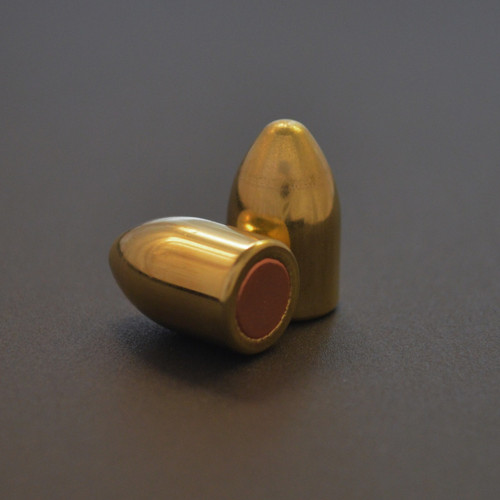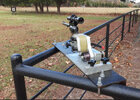LiveLife
Member
- POWDER AND PRIMER STORAGE -
Repost from another thread - https://www.thehighroad.org/index.php?threads/reloading-in-the-garage.876505/#post-11672843
As to primers, they are made with moisture sealant/barriers - https://www.thehighroad.org/index.p...-and-discussions.778197/page-10#post-11386382
BTW, THR thread on primer storage and misfires - https://www.thehighroad.org/index.p...mer-misfires-guns-ammo-article-review.872986/
I live at the coast where much of the year, there is 100% humidity and keep my primers in factory boxes/cardboard sleeves taped up in plastic bags and powders in factory plastic containers. If you are concerned about moisture/humidity, I would store the primer boxes in tape sealed plastic bags. (Plastic powder containers from manufacturers are meant to protect powder from moisture )
)
From Hodgdon - https://www.hodgdonreloading.com/reloading-education/safety/gunpowder-stability
From Alliant - https://www.alliantpowder.com/resources/catalog/2018_Alliant_Powder.pdf
Repost from another thread - https://www.thehighroad.org/index.php?threads/reloading-in-the-garage.876505/#post-11672843
storing powder, primers and dies in the garage ... looking to use a portable AC to keep the garage cool and control moisture
I would be more concerned about storage temperatures as powder deterioration/stability is dependent on storage temperatures.I store all my supplies and equipment in my garage ... too darn hot ... using primers and powders that ... have been stored in the garage
As to primers, they are made with moisture sealant/barriers - https://www.thehighroad.org/index.p...-and-discussions.778197/page-10#post-11386382
BTW, THR thread on primer storage and misfires - https://www.thehighroad.org/index.p...mer-misfires-guns-ammo-article-review.872986/
I live at the coast where much of the year, there is 100% humidity and keep my primers in factory boxes/cardboard sleeves taped up in plastic bags and powders in factory plastic containers. If you are concerned about moisture/humidity, I would store the primer boxes in tape sealed plastic bags. (Plastic powder containers from manufacturers are meant to protect powder from moisture
From Hodgdon - https://www.hodgdonreloading.com/reloading-education/safety/gunpowder-stability
"Smokeless Propellant
The main ingredient of smokeless propellant, comprising from about 55% to 90% of the composition, is nitrocellulose. The process of creating nitrocellulose leaves remnant acid in the material. This acid immediately starts decomposing the finished product. Left alone the decomposition will reach the stage where the propellant becomes unstable and self-ignites. This process resulted in massive explosions at U.S. Government arsenals after World War I.
To increase the life of the smokeless propellant, a stabilizing chemical is used. This “stabilizer” reacts with the acid to slow down the decomposition process. However, as the stabilizer reacts with the acid it is consumed. After the stabilizer is totally consumed, the propellant is no longer protected from the internal acid.
The entire stabilizer / decomposition process is a time and temperature function – the higher the temperature, the shorter the safe life of the powder. Even moderate temperature, over extended time, leads to propellant decomposition. As a rule of thumb, any temperature over that which is comfortable to a person is accelerating the decomposition of smokeless propellants.
Under proper storage, modern smokeless powder can last for decades. However, this does not mean the reloader can ignore how the powder is stored, particularly if in an uncontrolled environment such as a garage or storage building."
To increase the life of the smokeless propellant, a stabilizing chemical is used. This “stabilizer” reacts with the acid to slow down the decomposition process. However, as the stabilizer reacts with the acid it is consumed. After the stabilizer is totally consumed, the propellant is no longer protected from the internal acid.
The entire stabilizer / decomposition process is a time and temperature function – the higher the temperature, the shorter the safe life of the powder. Even moderate temperature, over extended time, leads to propellant decomposition. As a rule of thumb, any temperature over that which is comfortable to a person is accelerating the decomposition of smokeless propellants.
Under proper storage, modern smokeless powder can last for decades. However, this does not mean the reloader can ignore how the powder is stored, particularly if in an uncontrolled environment such as a garage or storage building."
From Alliant - https://www.alliantpowder.com/resources/catalog/2018_Alliant_Powder.pdf
"HOW TO CHECK SMOKELESS POWDER FOR DETERIORATION
Although modern smokeless powders contain stabilizers and are basically free from deterioration under proper storage conditions, safe practices require a recognition of the signs of deterioration and its possible effects.
Deteriorating smokeless powders produce an acidic odor and may produce a reddish brown fume. (Don’t confuse this with common solvent odors such as alcohol, ether and acetone.) Powder deterioration can be checked by opening the cap on the container and smelling the contents. Powder undergoing deterioration has an irritating acidic odor.
Dispose of deteriorating smokeless powders immediately. Check to make certain that powder is not exposed to extreme heat as this may cause deterioration. Such exposure produces an acidity which accelerates further reaction and has been known, because of the heat generated by the reaction, to cause spontaneous combustion."
Deteriorating smokeless powders produce an acidic odor and may produce a reddish brown fume. (Don’t confuse this with common solvent odors such as alcohol, ether and acetone.) Powder deterioration can be checked by opening the cap on the container and smelling the contents. Powder undergoing deterioration has an irritating acidic odor.
Dispose of deteriorating smokeless powders immediately. Check to make certain that powder is not exposed to extreme heat as this may cause deterioration. Such exposure produces an acidity which accelerates further reaction and has been known, because of the heat generated by the reaction, to cause spontaneous combustion."
Last edited:




